#FlightSimulator
Explore tagged Tumblr posts
Text
Atatürk Havalimanı, 05 pisti için taxi
Simülatör: FSX Steam Uçak: PMDG Boeing 777-300 Scenary: Rex4 Texture, Taxi2Gate İstanbul Livery : Turkish Airlines 777-300ER AI 🛩️ FSX Steam Edition Nedir? Microsoft Flight Simulator X: Steam Edition, 2006 yılında çıkan orijinal FSX‘in yenilenmiş ve dijitalleştirilmiş bir versiyonudur. FSX’in hakları Dovetail Games tarafından alınarak Steam platformunda tekrar yayınlanmıştır…
0 notes
Text

🚀 After 3 years in the hangar, we have finally opened SimFly’s doors to the world. Our Junior Pilot License now costs less than a cup of coffee, and it is even announced in this authentic 1930 newspaper! Know that friend or relative who lives in a virtual cockpit? Tag them and let them take off for real (well, virtually real) today. ✈️
#MSFS2020#MSFS2024#MSFS#FlightSim#XPlane#P3D#Prepare3d#SimFlyNow#VirtualPilot#GamingDeals#FlightSimmer#NewRelease#SimFly#PilotDreams#FlightSimCommunity#AffordableGaming#MustHave#SimFlyLaunch#FlightSimulator#GamerGift#RetroTech#AviationLovers#NewLaunch#VintageGaming#PilotLife#JuniorPilot#VirtualSkies#FlightSimLife#JuniorPilotLicense#AviationGaming
1 note
·
View note
Text
Peru Landing
0 notes
Text

#Aviation#AvGeek#Aerospace#FlightSafety#PilotLife#AirTrafficControl#AircraftMaintenance#DroneTechnology#FlightSimulator#AviationPhotography#AirlineIndustry#AviationLovers#FlightTraining#AerospaceEngineering#AviationNews#FlightDeck#AirplaneMode#AviationHistory#AviationEnthusiast#FlightAttendantLife#AviationGeek#AviationDaily#AviationWorld#AviationCommunity#AviationLife#bird#Peregrine Falcon#Ostrich#Harpy Eagle#Budgerigar
0 notes
Text
Exploring the First Cockpit: A Journey to the Flight Simulator Center

Introduction to the First Cockpit
Aviation has always been synonymous with innovation and technological advancement. The cockpit, often referred to as the heart of an aircraft, plays a pivotal role in its operation. For aspiring pilots and aviation enthusiasts, understanding the evolution of the cockpit is crucial to appreciating modern aviation. At First Cockpit, a renowned flight simulator center, students and professionals alike get hands-on experience in mastering the complexities of cockpit systems and controls. This unique approach bridges the gap between theoretical knowledge and practical application, making it an invaluable tool for pilot training and aviation enthusiasts.
What is a Cockpit?
The cockpit is the control center of an aircraft where pilots operate the systems necessary for flight. It houses essential instruments, controls, and communication systems, allowing pilots to navigate safely and efficiently through diverse flight conditions. Modern cockpits are equipped with advanced technology, including touchscreens, autopilot systems, and heads-up displays, designed to enhance flight safety and efficiency.
For those seeking to understand the intricacies of the cockpit, a visit to a flight simulator center like First Cockpit offers an unparalleled opportunity. These centers replicate real cockpit environments, allowing aspiring pilots to familiarize themselves with various aircraft systems, from small private planes to large commercial airliners. Simulators not only provide immersive training experiences but also help pilots develop the confidence and expertise needed for real-world scenarios.
Whether you’re preparing for a career in aviation or simply curious about how aircraft operate, the cockpit remains a fascinating and critical aspect of flight. With resources like flight simulators, learning about cockpits has never been more accessible or engaging.
The Birth of the First Cockpit
The concept of the cockpit dates back to the earliest days of aviation. In the early 20th century, cockpits were basic open-air structures with minimal controls and instruments. Pilots relied heavily on visual cues and physical endurance to navigate through harsh weather conditions. The lack of enclosed designs often exposed pilots to freezing temperatures and strong winds during flights.
Over time, advancements in aviation demanded more sophisticated cockpit designs. The inclusion of enclosed spaces with rudimentary instruments marked the first major evolution. These early cockpits focused on providing basic navigation tools, ensuring pilots could complete longer journeys with greater safety.
The introduction of flight simulators revolutionized cockpit training, offering a risk-free environment to practice and perfect skills. First Cockpit, a leading flight simulator center, has embraced this technology to bring historical and modern cockpit experiences to life. From re-creating early designs to simulating cutting-edge cockpits, centers like these play a crucial role in aviation education and innovation.
The Evolution of Cockpit Design
Early Cockpit Designs
In the early days of aviation, cockpits were simplistic and functional. These designs featured minimal instrumentation, with basic gauges for altitude, airspeed, and fuel levels. Pilots had to rely heavily on their instincts and navigational skills, often using landmarks or celestial navigation to find their way.
The advent of enclosed cockpits in the 1920s and 1930s marked a significant milestone. This design shift not only improved pilot comfort but also enabled longer and more reliable flights. Historical simulations at First Cockpit’s flight simulator center allow aviation enthusiasts to experience these early designs firsthand, providing insight into the challenges faced by pioneering aviators.
Modern Cockpit Innovations
Modern cockpits are marvels of engineering, combining advanced technology with user-friendly designs to enhance pilot performance. Today’s cockpits feature glass displays, integrated systems, and automation tools, such as autopilot and flight management systems, that simplify complex flight operations.
At First Cockpit, a state-of-the-art flight simulator center, students can explore these advancements through hands-on training. The simulators replicate the feel of operating advanced aircraft, from touchscreen panels to augmented reality displays. This immersive experience prepares pilots to excel in a rapidly evolving aviation industry while showcasing the strides made in cockpit innovation.
The Role of Flight Simulators in Pilot Training
Flight simulators have revolutionized pilot training by offering a safe, cost-effective, and immersive environment for learning. These high-tech devices replicate real-world flight conditions, enabling pilots to hone their skills without the risks and expenses associated with actual flying. Whether practicing takeoffs and landings or navigating complex weather scenarios, simulators prepare pilots for various challenges they may face in real-life situations.
For students pursuing a pilot course in India after 12th, simulators provide an essential bridge between theoretical knowledge and practical application. They allow trainees to familiarize themselves with cockpit controls, develop critical decision-making skills, and build confidence—all in a controlled setting. Simulators also play a crucial role in recurrent training, ensuring experienced pilots stay updated on the latest protocols and technologies.
How Flight Simulators Work
Flight simulators combine advanced software, hardware, and visual systems to create an authentic flying experience. At their core, they use computer-generated simulations to mimic various flight conditions, including different terrains, weather patterns, and aircraft types.
Simulators are equipped with realistic cockpit layouts, offering trainees a hands-on experience with controls like throttle levers, rudders, and navigation panels. The visual systems use high-definition displays to provide 360-degree views of the virtual environment, enhancing spatial awareness. Motion systems further replicate the physical sensations of flying, such as turbulence, acceleration, and landings.
These systems can be customized to simulate specific scenarios, such as engine failures or emergency landings, helping trainees develop quick decision-making skills. By integrating real-time feedback, flight simulators enable pilots to learn from their mistakes, perfect their techniques, and handle complex situations with confidence.
Benefits of Using Flight Simulator Center
Using flight simulators offers a wide array of benefits for pilot training. First and foremost, they provide a cost-effective alternative to actual flying, significantly reducing expenses related to fuel, aircraft maintenance, and operational costs. For trainees pursuing a pilot course in India after 12th, this makes high-quality training more accessible.
Simulators also allow pilots to practice dangerous or rare scenarios in a safe environment. From engine failures to severe weather conditions, pilots can master emergency procedures without risking lives or equipment.
Another significant advantage is flexibility. Flight simulators can replicate various aircraft types, enabling trainees to familiarize themselves with multiple cockpit layouts and systems. This versatility is especially useful for aspiring commercial pilots who may need to operate different planes throughout their careers.
Lastly, simulators contribute to environmental sustainability by minimizing the carbon footprint associated with traditional flight training. They reduce fuel consumption and emissions while still delivering comprehensive, hands-on learning experiences.
#FlightSimulator#AviationTraining#PilotSimulator#FlightSimulationCenter#PilotTrainingHub#LearnToFly#AviationTechnology#SimulatorTraining#VirtualFlightExperience#AircraftSimulation
1 note
·
View note
Text

este programa puede importar y exportar modelos Anteriores Flight Simulator y X-plane para MSFS2020 y tambien puede para ver tus texturas hechas ModelConvertX Compatible FS2004,FSX,X-plane,MSFS,P3D
se requiere el SDK MSFS y otros simuladores
1 note
·
View note
Text
Microsoft Flight Simulator 2024
#flightsimulator#microsoftflightsimulator#msfs#flightsim#microsoftflightsimulator2024#msfs2024#microsoftflightsimulatorx#infiniteflightsimulator#aviation
1 note
·
View note
Text

HM Coastguard DA62 repaint for FSX/P3d This is painted on the IRIS DA42 which is freeware and available from the IRIS simulations website. I've no time scale for getting this uploaded but it will most likey be at simviation.com.
0 notes
Text
Taking Simulation to New Heights: The Ultimate Flight and Racing Experience.
0 notes
Text
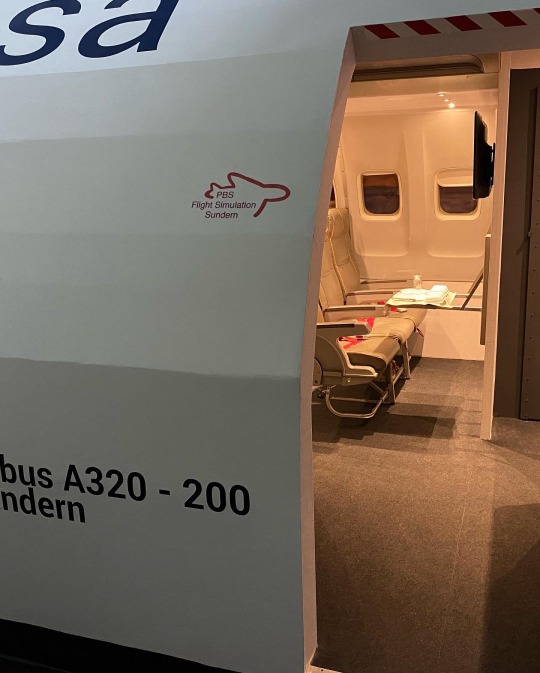
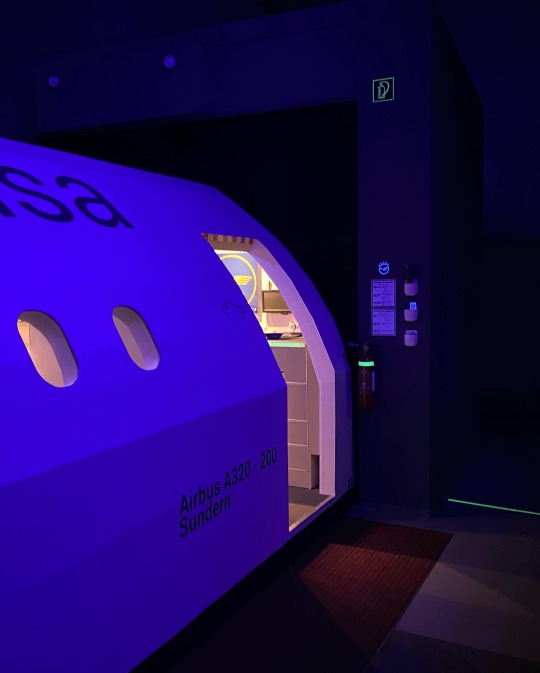
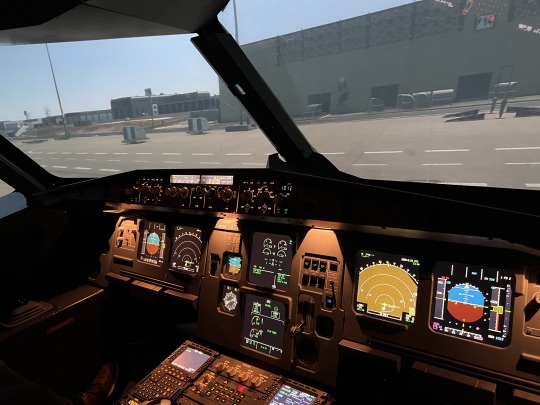
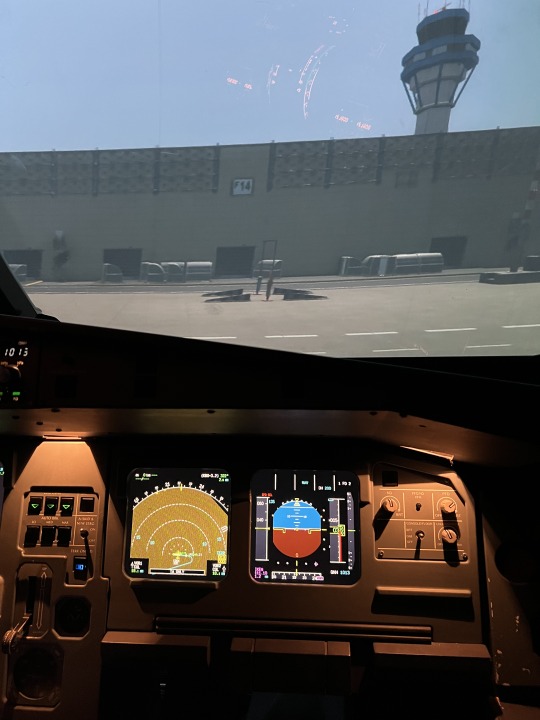
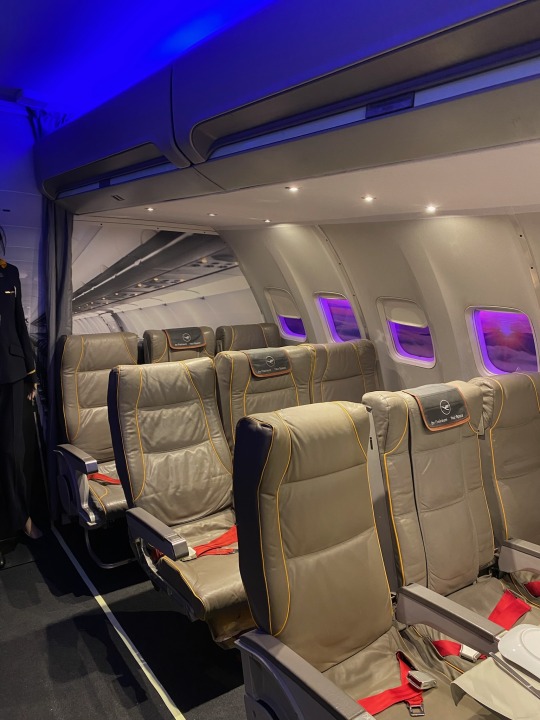
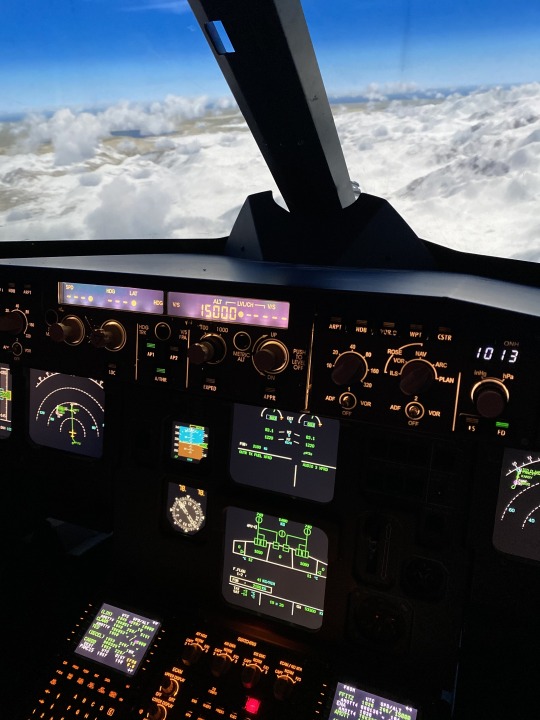
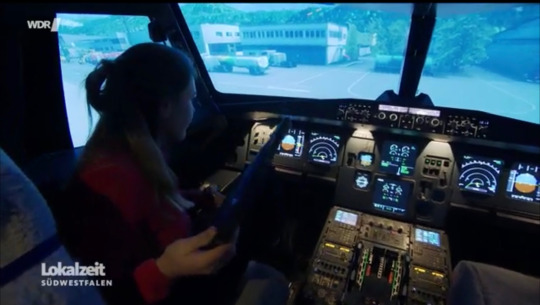
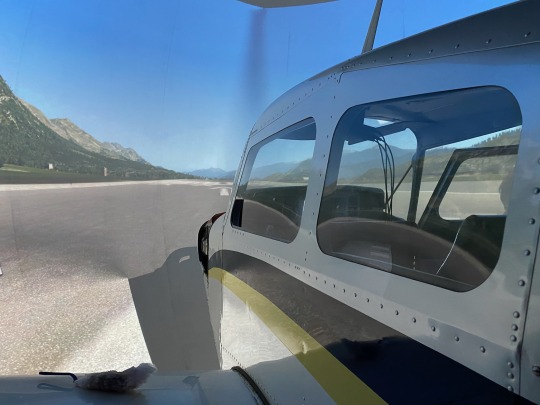
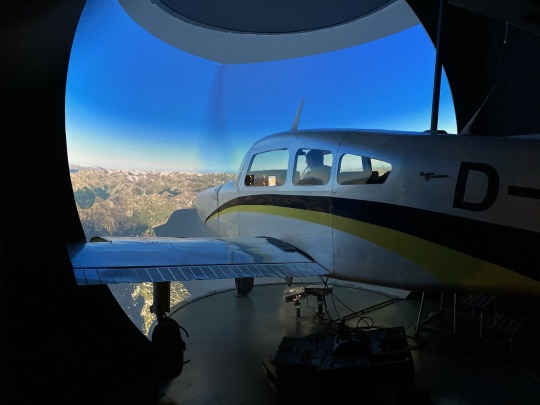
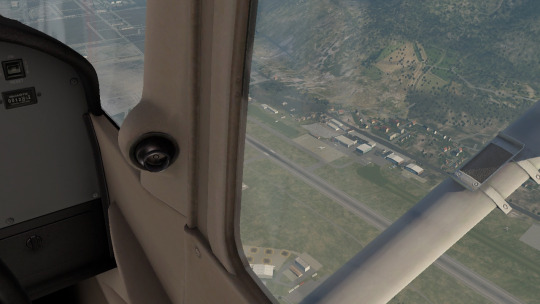
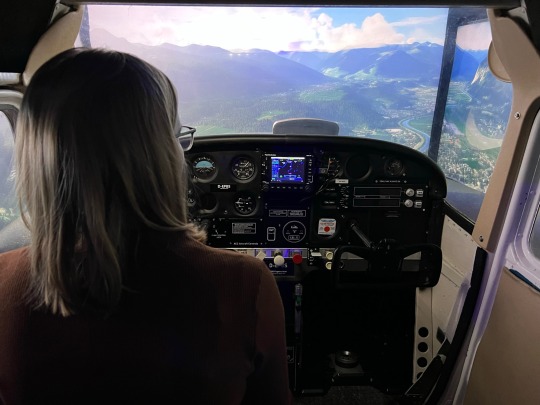
#pbsflight#sauerland#sundern#nrw#flightsimulator#cessna#fliegen#flugzeug#simulation#airbus#aviation#plane#aircraft#airplane#beechmusketeer
0 notes
Text

🧳𝗣𝗮𝗰𝗸 𝘆𝗼𝘂𝗿 𝗯𝗮𝗴𝘀 and take off on a journey! 🤔Why? Because traveling isn't just about visiting cool places – it's like a superpower for your mind and heart. Meeting new people, trying yummy foods, and seeing amazing sights can teach you so much. It's like a giant adventure that makes you wiser and happier. So, why wait? 𝗕𝗼𝗼𝗸 𝗳𝗹𝗶𝗴𝗵𝘁✈️ ticket and let the world show you how awesome it is!
𝗙𝗼𝗿 𝗠𝗼𝗿𝗲 𝗗𝗲𝘁𝗮𝗶𝗹𝘀 📲Call on: +44 20-3948-4107 🌎Visit on: https://www.farhutz.co.uk
🛫 Domestic | International | Economy & Business Flights ✈️ Great Flight Deals | Lowest Airfare | Last Minute Booking | Refund & Cancellation | Date Change
#bookflights#unitedstates#cheapflights#flightbooking#FestiveFlights#travellife#pack#england#travel#london#catchflights#festivaloflights#flightsimulator#wanderlus#flights#aviation#aircraft#planes#uk#travelling#relatable quotes#traveling#usa
1 note
·
View note
Video
youtube
Flight Simulator 2020 - 3 motor
0 notes
Text
1. Juli 2024
Mein erster Joystick nach über 30 Jahren
Aus Gründen muss ich mit einer Flugsimulation eine bestimmte Strecke abfliegen, um davon ein Flugvideo zu erstellen. Schon lange liebäugle ich damit, mir den Flightsimulator von Microsoft näher anzusehen. Zuletzt hatte ich davon eine - selbstverständlich gecrackte - Version auf meinem Amiga. Den bekam ich mit etwa 16 Jahren und hatte ihn bis zum 3. oder 4. Semester. Das ruckelte und zuckelte und klötzchengrafikte, aus heutiger Sicht unterirdisch, damals das Nonplusultra!
Ich installiere die kostenlose Testversion vom MS Flightsimulator X, der 2006 erschienen ist. Die Grafik auch dieser Version ist etwas in die Jahre gekommen, läuft aber auf meiner ebenfalls nicht mehr ganz taufrischen Hardware zufriedenstellend. Nur die Steuerung ...
Mit Tastatur, zu diesem Schluss komme ich sehr schnell, hat das alles keinen Sinn. Allerdings wäre mir jetzt auch zu viel, so ein komplettes Steuerpult mit Fußpedalen und Schubhebeln anzuschaffen. Ich wüsste auch gar nicht, wohin damit.
Joysticks haben vor allem in meiner Jugend eine wichtige Bedeutung gehabt. Es gab welche mit der Bezeichnung "Quickshot Pro" und mit automatischen Dauerfeuer erinnere ich mich. Manche waren stabiler, andere weniger. Aber für einen Jugendlichen wie mich mit - natürlich - zu wenig Taschengeld sehr teuer. Also baute ich sie mir selbst.
Gelenke aus leeren Deorollern, Innenleben aus Tastern aus dem Elektronikshop und so weiter. Leider hat meines Wissens kein einziger die diversen Umzüge überlebt. Jedenfalls waren es einfache digitale Dinger: Je ein Taster für jede Richtung, die Diagonalen ergeben sich durch Druck zweier Taster und dann natürlich der Feuerknopf! ich muss in meiner Jugend so viel gezockt haben, dass das bis etwa Mitte 50 ausreichte. Jedenfalls hatte ich viele Jahre kein Verlangen danach von einer kurzen Phase eines Ralley-Spiels bei damaligen Bekannten abgesehen. Keine Playstation oder anderweitige Konsole, nichts dergleichen.
Nun brauche ich aber diesen Joystick, mit dem man ein Flugzeug fliegen kann. Es ist ein "Titanwolf" geworden. Was für ein Name! Was für ein Gerät! Schwer durch Metall in der Unterkonstruktion.

Joystick Titanwolf
Der Schubregler (ohne den geht es nicht) ist ein kleines Drehrädchen neben dem Fußgelenk. Man kann den Stick um die Hochachse drehen, was der Funktion der Seitenruderpedale im Flugzeug entspricht. Mit den anderen Knöpfen kann man die Landeklappen und das Fahrwerk steuern. Ich habe auch noch gar nicht alles herausgefunden.

Flugboot Grumman Goose im Flightsimulator
Jedenfalls kann ich (nachdem ich auch noch Steam installiert und die Vollversion für 4,99 € gekauft habe) damit den gewünschten Flug absolvieren und aufzeichnen. Als nächstes muss ich mich dringend mit AR-Brillen in Verbindung mit dem Flugsimulator besch��ftigen.
(Markus Winninghoff)
6 notes
·
View notes
Text
Airliner Landing in Croatia - MFS Flight Simulator
0 notes
Video
youtube
Short flight using FCR!!!
0 notes
Text
Comprehensive Aeroplane Pilot Training with First Cockpit

Introduction to Aeroplane Pilot Training
Becoming an aeroplane pilot is a dream shared by many aviation enthusiasts. The journey to achieving this goal begins with comprehensive pilot training, which equips aspiring aviators with the knowledge, skills, and confidence required to navigate the skies. Pilot training involves a blend of theoretical education and practical flight experience, ensuring students are prepared to handle the responsibilities of operating aircraft safely and efficiently. From learning the fundamentals of aerodynamics to mastering advanced navigation techniques, each stage of the training process is designed to foster competence and professionalism in future pilots.
A standard pilot training program typically consists of ground school, simulator sessions, and actual flight training. Ground school focuses on imparting theoretical knowledge, such as aviation regulations, meteorology, and aircraft systems. Simulator training allows students to practice handling various scenarios in a controlled environment, building confidence before taking to the skies. Flight training, conducted under the guidance of certified instructors, enables students to gain hands-on experience in real aircraft, gradually progressing from basic maneuvers to more complex flight operations. By the end of their training, pilots are not only technically proficient but also equipped with the decision-making skills crucial for safe flight operations.
Importance of Pilot Training
Pilot training is the cornerstone of aviation safety and efficiency. The comprehensive nature of this training ensures that pilots are prepared to respond effectively to various challenges, from adverse weather conditions to unforeseen technical issues. Through rigorous practice and assessment, aspiring pilots develop the critical thinking and problem-solving abilities required to make informed decisions in high-pressure situations.
Moreover, pilot training instills a deep understanding of aviation regulations and best practices, fostering a culture of safety and professionalism. Pilots learn to work collaboratively with air traffic controllers, crew members, and other stakeholders to ensure seamless operations. This level of preparation is essential not only for individual career success but also for maintaining public trust in the aviation industry.
For aspiring commercial pilots, training also includes developing communication and leadership skills. These qualities are vital for managing in-flight operations, ensuring passenger safety, and maintaining composure in emergencies. By investing in quality training, aspiring pilots lay the groundwork for a rewarding and responsible career, contributing to the broader goals of aviation excellence.
First Cockpit: A Paradigm Shift in Training
At First Cockpit, we believe that pilot training should go beyond traditional methods, embracing innovation to meet the demands of modern aviation. Our approach combines cutting-edge technology with personalized instruction, ensuring that each student receives the highest quality education tailored to their unique needs.
One of the key features of First Cockpit's training programs is the integration of advanced flight simulators. These state-of-the-art devices replicate real-world scenarios, allowing students to practice handling complex situations in a safe and controlled environment. From simulating adverse weather conditions to managing technical malfunctions, our simulators provide invaluable experience that prepares pilots for any challenge they may encounter in the skies.
In addition to technical training, First Cockpit emphasizes the importance of soft skills, such as communication, teamwork, and leadership. Our curriculum is designed to produce well-rounded pilots who excel not only in their technical abilities but also in their interpersonal interactions. This holistic approach ensures that graduates are prepared to thrive in the dynamic and demanding environment of professional aviation.
Furthermore, our experienced instructors bring a wealth of knowledge and industry expertise to the classroom. Their mentorship and guidance help students navigate the complexities of pilot training with confidence and clarity. By fostering a supportive and engaging learning environment, First Cockpit sets a new standard for pilot education, empowering the next generation of aviators to soar to new heights.
Overview of the Training Program
At First Cockpit, we have designed a comprehensive training program that equips aspiring pilots with the skills and knowledge required for success in the aviation industry. Our curriculum is structured to ensure a balance between theoretical education and practical application, fostering a holistic learning experience. Students are guided through every phase of their training by experienced instructors who are dedicated to their growth and success.
Our training program includes foundational courses on aviation principles, advanced navigation techniques, and real-world application through simulator sessions and flight training. By integrating state-of-the-art tools and methodologies, we provide a seamless transition from classroom learning to in-flight proficiency. Each aspect of the program is tailored to meet the specific needs of modern aviation, ensuring students are well-prepared for the demands of their careers.
Course Structure and Duration
First Cockpit’s training program is designed to accommodate various learning paces while maintaining high standards of education. The program is divided into three main phases: ground school, simulator training, and practical flight sessions.
Ground School: This phase covers essential theoretical concepts, including aviation regulations, meteorology, and aircraft systems. It typically lasts for 8-12 weeks, depending on the course intensity.
Simulator Training: Students spend approximately 50-100 hours in advanced flight simulators, practicing emergency scenarios and honing their technical skills. This phase is flexible, allowing students to progress based on their proficiency.
Flight Training: Practical flight sessions involve 200-250 hours of real-world flying experience under the supervision of certified instructors. This phase usually spans 6-12 months, culminating in a final assessment for certification.
The entire program can be completed within 12-18 months, depending on the student’s availability and learning pace, making it accessible for both full-time and part-time learners.
Types of Training Offered
First Cockpit offers a diverse range of training programs tailored to meet the needs of aspiring pilots at various stages of their careers. Our offerings include:
Private Pilot License (PPL): Designed for aviation enthusiasts who wish to fly recreationally. This course covers basic flight principles, navigation, and safety practices.
Commercial Pilot License (CPL): Aimed at those pursuing a career in commercial aviation. The curriculum includes advanced training in navigation, instrumentation, and multi-engine aircraft operations.
Instrument Rating (IR): This program enhances a pilot’s ability to operate under instrument flight rules (IFR), crucial for navigating challenging weather conditions and busy airspace.
Flight Instructor Training: For experienced pilots looking to share their knowledge, this program focuses on teaching methodologies and instructional techniques.
Multi-Engine Rating: Specialized training for operating multi-engine aircraft, emphasizing safety and efficiency.
By offering such a variety of courses, First Cockpit ensures that every aspiring aviator can find a program that aligns with their goals and aspirations, paving the way for a successful career in aviation.
Ground School: Theoretical Foundations
Ground school is the cornerstone of pilot training, providing aspiring aviators with the theoretical knowledge they need to succeed in the skies. At First Cockpit, our ground school curriculum is meticulously designed to cover every fundamental aspect of aviation, ensuring that students build a strong foundation before moving on to practical training.
The program begins with an introduction to aviation principles, including aerodynamics, aircraft systems, and flight mechanics. Students delve into the complexities of meteorology, learning to interpret weather patterns and their impact on flight operations. Aviation regulations and air traffic control procedures are also thoroughly covered, equipping students with the knowledge to operate within the legal framework of the industry.
Ground school at First Cockpit emphasizes interactive learning, combining traditional lectures with modern teaching tools such as multimedia presentations and virtual simulations. This approach ensures that students remain engaged and retain critical information effectively. Regular assessments and quizzes are integrated into the curriculum, allowing both instructors and students to track progress and address areas that require additional focus.
By the end of ground school, students emerge with a comprehensive understanding of aviation theory, ready to apply their knowledge in simulators and real-world flight scenarios. This phase of training not only builds technical proficiency but also instills the confidence and decision-making skills essential for a successful career in aviation.
Flight Training: Hands-On Experience
Simulator Training
Simulator training is an essential phase in the journey of becoming a pilot, offering students a safe and controlled environment to hone their skills. At First Cockpit, our advanced flight simulators replicate real-world scenarios with precision, providing a realistic experience that prepares students for actual flight operations.
During simulator training, students are exposed to a variety of situations, including emergency procedures, adverse weather conditions, and equipment failures. These scenarios are designed to develop their problem-solving abilities and enhance their situational awareness. The use of state-of-the-art technology ensures that every detail, from cockpit instrumentation to external visuals, mirrors real flight conditions.
Instructors guide students through each simulation, offering feedback and insights to improve performance. This phase also allows students to familiarize themselves with the controls and systems of different aircraft types, building confidence and proficiency. By the end of this stage, students are equipped to handle complex flight scenarios, laying the groundwork for their transition to in-flight training.
In-Flight Training with Instructor
In-flight training is where aspiring pilots take to the skies, applying the knowledge and skills they have gained in ground school and simulators. At First Cockpit, this phase is conducted under the supervision of certified flight instructors who ensure that students receive hands-on experience in a safe and structured environment.
Training begins with basic maneuvers, such as takeoffs, landings, and level flights, before progressing to more advanced operations like navigation, cross-country flying, and emergency procedures. Students gain practical experience in handling the aircraft under various conditions, building their confidence and competence with each flight.
One of the key aspects of in-flight training is the emphasis on real-world application. Students learn to communicate with air traffic control, interpret flight instruments, and make quick decisions in dynamic situations. The instructors provide continuous guidance, ensuring that each flight session contributes to the student’s overall development.
By the end of in-flight training, students will have logged the necessary flight hours and demonstrated their ability to operate an aircraft independently. This phase culminates in a comprehensive assessment, paving the way for students to earn their pilot certification and embark on a successful aviation career.
Safety Protocols in Pilot Training
Safety is paramount in pilot training, forming the foundation of all activities at First Cockpit. Our comprehensive safety protocols are designed to ensure the well-being of students, instructors, and staff, while instilling a safety-first mindset in future aviators.
Our training facilities are equipped with state-of-the-art technology, regularly inspected and maintained to the highest standards. Before each flight, students and instructors conduct thorough pre-flight checks to ensure the aircraft is in optimal condition. Emergency procedures are a critical part of the curriculum, with students trained to handle various scenarios confidently and effectively.
Instructors undergo regular safety training to stay updated on the latest industry practices and regulatory requirements. Additionally, simulator sessions provide a risk-free environment to practice challenging scenarios, reinforcing critical decision-making skills. Safety briefings and debriefings are integral to every training session, fostering a culture of continuous improvement and vigilance.
By adhering to stringent safety protocols, First Cockpit ensures that all graduates are not only proficient pilots
#PilotTraining#FlightSchool#AviationTraining#PilotCertification#FlightInstructor#AviationEducation#PilotLicense#AirplaneTraining#CommercialPilot#PrivatePilot#FlightSimulator#PilotCareer#AviationIndustry#FlightTrainingProgram#AviationCourses
1 note
·
View note